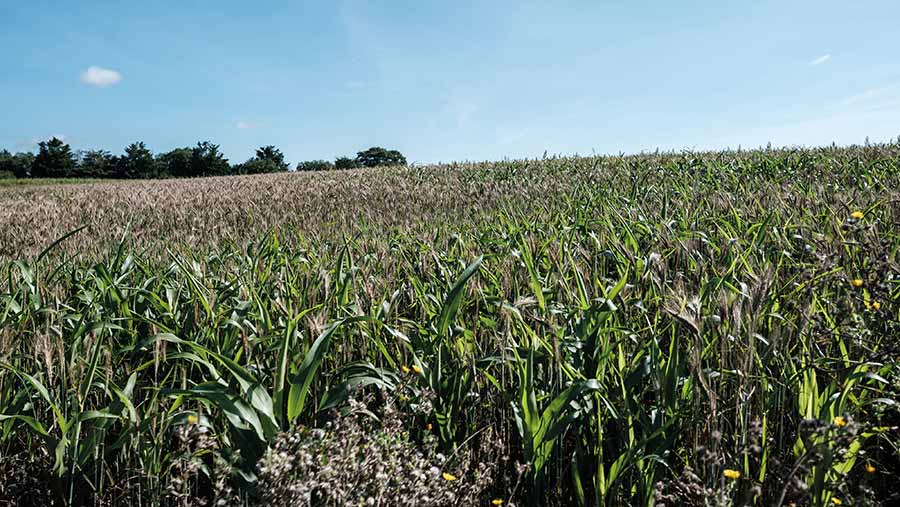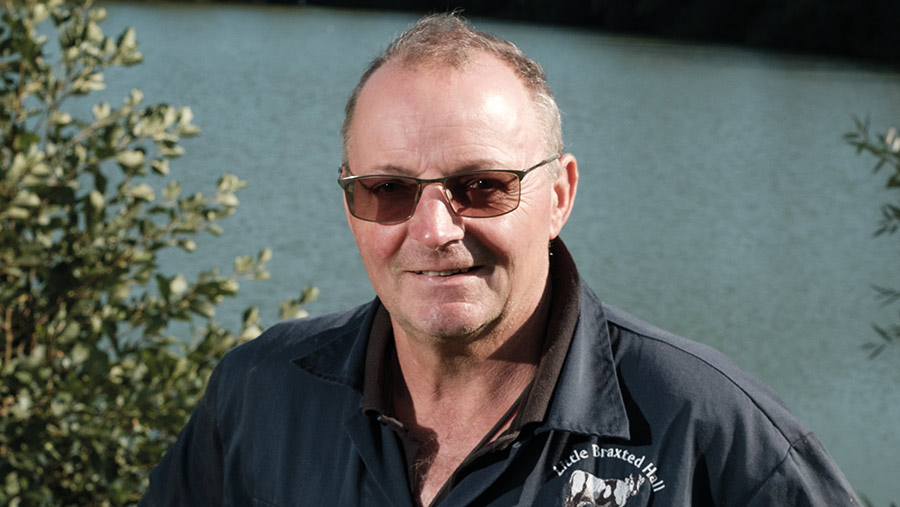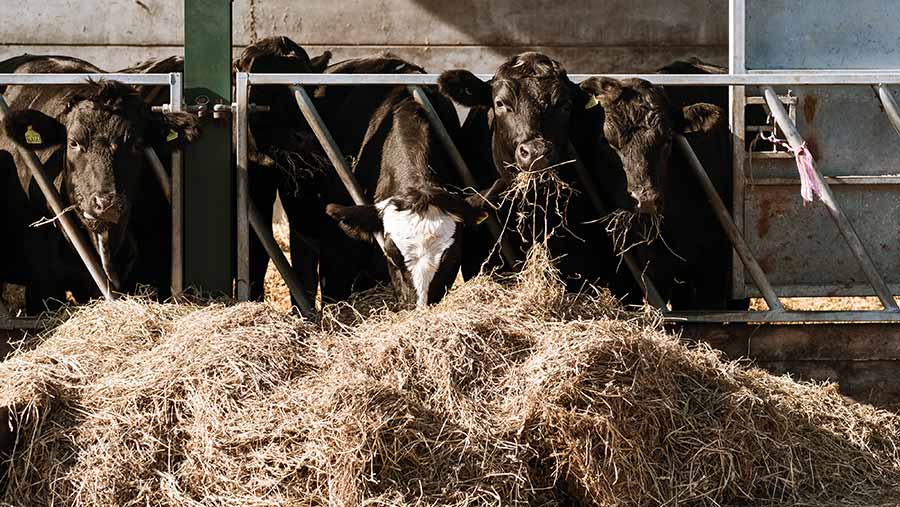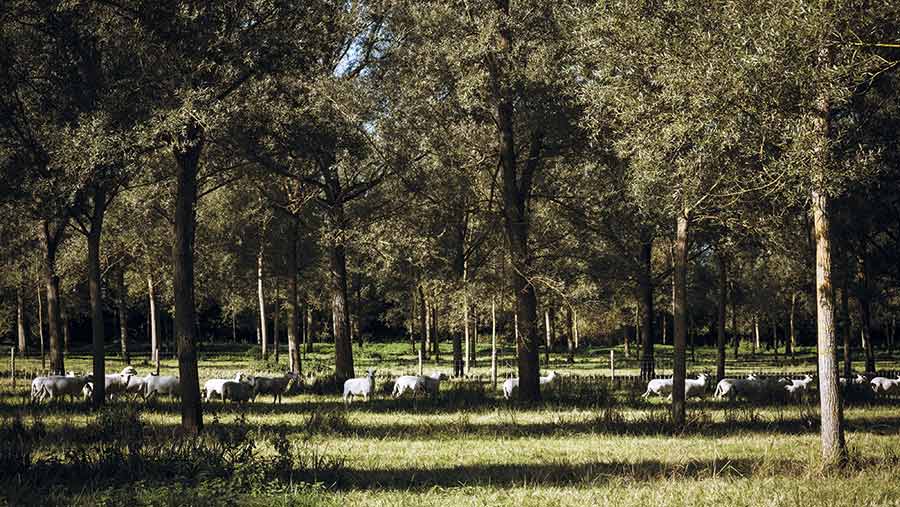Further enterprises vital to fill BPS gap for Essex farm
 © MAG/Colin Miller
© MAG/Colin Miller Transition farmer Kit Speakman says his business is at a crossroads – due to the loss of the Basic Payment Scheme (BPS) and a Countryside Stewardship (CS) agreement, which expires next year.
Extending to some 275ha, Little Braxted Hall Farm is a mixed arable, beef and sheep enterprise adjacent to the River Blackwater and A12 dual-carriageway, midway between Colchester and Chelmsford, Essex.
“It is vital for us to look at new enterprises because we are losing the basic payment and we will soon be out of stewardship, too,” says Mr Speakman, who farms with wife Trudy.
“It’s a big chunk of money to lose over the next three or four years.”
Not due to be fully up and running in 2024, Defra’s new Environmental Land Management scheme is unlikely to make up even half the lost revenue, he adds. This means alternative income streams are important.
Mr Speakman says he has three main goals to make the farm more sustainable: replacing lost income as BPS is phased out; creating a fully integrated, profitable farm business; and widening the rotation by introducing more grass.
See also: How mixed low-input farming can help grassland biodiversity

© MAG/Colin Miller
Transition goals
- Bridging income gap after stewardship
- Creating fully integrated farm business
- Increasing grass and widening rotation
Integrated business
Already highly diversified, the farm includes 21 high-specification offices rented to a range of businesses, more than 5ha of fishing lakes and 24ha of cricket bat willow trees – grown for JS Wright & Sons, the world’s largest supplier of cricket bat willow.
“The land isn’t the highest quality – and when we bought the farm in 1995 we were keen and conscious that we would have to diversify,” says Mr Speakman.
“Today, diversification is probably even more important than it was then.”
On the arable side, a six-year rotation includes land let for sweetcorn and potatoes grown on contract for crisping.
Other crops include milling wheat and barley, with stubble turnips grown for cattle after each cereal crop where possible.
“It’s poor land so we have a wide rotation – which the spud boys like because one-in-six is better than five,” says Mr Speakman. “We need the cattle muck and import chicken manure to increase our P and K levels, which we have done quite successfully.”
About two-thirds of the land can be irrigated, with a large abstraction licence for the lakes helping to bolster yields.
As well as arable land, grassland is irrigated to make more silage or autumn grazing for cattle when needed.
Maximising value
“It is all about adding value – we try to maximise every asset we have. The lakes provide irrigation, fishing and we have a lake-source heat pump, too. The lakes also have an amenity value, so they are earning an income three or four times over”.
A keen conservationist, Mr Speakman has won numerous awards from the Essex Agricultural Society. The farm has been in a CS scheme for almost 20 years – although the agreement is due to expire in December 2022.
Some 300-head of cattle are grazed on stewardship land, growing herbal leys, with 100 outwintered to save on housing – fed on stubble turnips, forage rape, straw and minerals. Others are bedded in straw yards to produce farmyard manure, which then goes back on to the fields.
“It’s cheaper to outwinter than it is to house – it takes the pressure off buildings, too. We’re lucky to have the right soil type to do that, although the weather during the past two years has been a challenge for outwintered stock.”

© MAG/Colin Miller
Optimising grass
The grass-based system uses native breeds – particularly Herefords.
“They’re a great breed – quiet, easy to feed and they fatten on nothing. They don’t even moan when they’re hungry. But it is a job to get enough of them, so we do Angus beef too.”
It’s a switch from producing barley beef in years gone by, when barley was cheap, adds Mr Speakman.
“I generally think barley is worth selling when the price is more than £125/t, but its probably worth feeding if the price is lower.”
A big goal is to increase the amount of grass in the rotation, primarily for beef but also because it grows well and can be irrigated if necessary.
“It’s a good crop for the sort of land we have, and it makes sense to grow more of it.”
The aim is to produce perennial ryegrass for seed. It will also fit well into the existing arable rotation, overseen by farm contractor Robert Mann. It will be drilled in spring, undersown with barley and then grazed after the barley is combined.
The idea is that the grass seed will be harvested the following June, with the residue of the crop being silaged for the cattle as a by-product. He is well-versed in optimising complementary enterprises across the farm.
“We undersow a lot of grass already, and our stubble turnips into standing barley. Then we round-bale the straw and leave the bales in the field and strip graze – it cuts down the workload and makes everything easier.”
Carbon status ‘is major selling point’
Climate change mitigation is a big business opportunity, believes Kit Speakman, who says the farm’s office lets are almost carbon neutral.
The office buildings are heated from the farm’s lake-source heat pump. Electricity is supplied by 640kWh of roof- and field-based solar panels, which also run a neighbouring cold store via a power-purchase agreement.
“When we originally converted the offices, they were using a lot of electricity off the grid. Now this is minimal. It is a major selling point for us and a major attraction for businesses who choose to locate here.”
An on-site gym with shower, indoor tennis court and picnic area by the lake enhance the experience for tenants. So, too, do three charging points for electric vehicles – soon to be linked to the solar panels.
“We are keen to measure our carbon footprint,” says he says. “I just wish we had done it 20 years ago when we joined Countryside Stewardship. Then we would be able to see the progress we have made.”
Cricket bat willow ‘is most profitable’
Willow, grown for cricket bats, is the most lucrative crop on the farm, says Mr Speakman – utilising marginal land that would otherwise be largely unproductive.
The farm sells about 120 trees a year for cricket bats – growing his own young willow sets and selling them to other growers, too.
Trees have a lifespan of 15-20 years and must be well looked after to be made into grade one cricket bats with no knots.
Grass around the trees is grazed by a flock of 120 pedigree Easycare ewes, he explains.
“They need minimal shepherding or veterinary supervision, and they don’t need shearing because they shed their fleece naturally in the summer and they lamb outside.”
Good health status means the flock hasn’t been wormed for almost a decade, with no foot-rot for the past four years.
The flock has a lambing percentage of about 150% weaned, with lambs finished on grass and marketed at 22-24kg deadweight.
In total, there are about 25ha of willow trees. “It’s all along the river and it is no-input grassland.
There is no manure, no nitrogen, no nothing – just permanent grassland with cricket bat willows which graze sheep under,” he says.
“There are four revenue streams on this land, and it’s all floodplain. We get the basic payment, stewardship money, income from the sheep and the income from the willow trees. It’s some of the most profitable land on the farm.”

© MAG/Colin Miller
